Facebook is great at sending me old videos that may interest me. It’s like it wants me to cover a specific topic. Darn algorithms, lol.
This past year, TDF Honest Farming shared a video on Facebook about one of their Jersey cows that missed the milking line. The poor girl was SO full of milk that it looked painful. She was sure doing the waddle with how full her udder was.
But what actually got my attention was the comments and questions about how “terribly thin” Derrick’s cows looked:
Why can I see their ribs. Doesn’t look like they are being fed. Let them roam, poor cows.
She looks underfed… Shall I send you pics of what they should look like[?]
Why are they so skinny? They look like they haven’t eaten nothing in years.
Do you not feed them?!?! Jesus! They are so skinny. You can see the bones!!!
They are all bones, why??
That cow is skin and bones.
You can see her ribs. Poor cow
Others I didn’t include are from people who had the audacity to tell Derrick that he was doing everything wrong and he was abusing his cows. (Highly amusing content to read, I have to admit!)
Anyway, let’s not talk about that. (Nor how “overfilled” that cow’s udder seems in the video. That’s for another post.)
Let’s answer this simple question: Are these comments correct? Is there a legitimate cause for concern?
Where did people get the idea that modern dairy cows are malnourished?
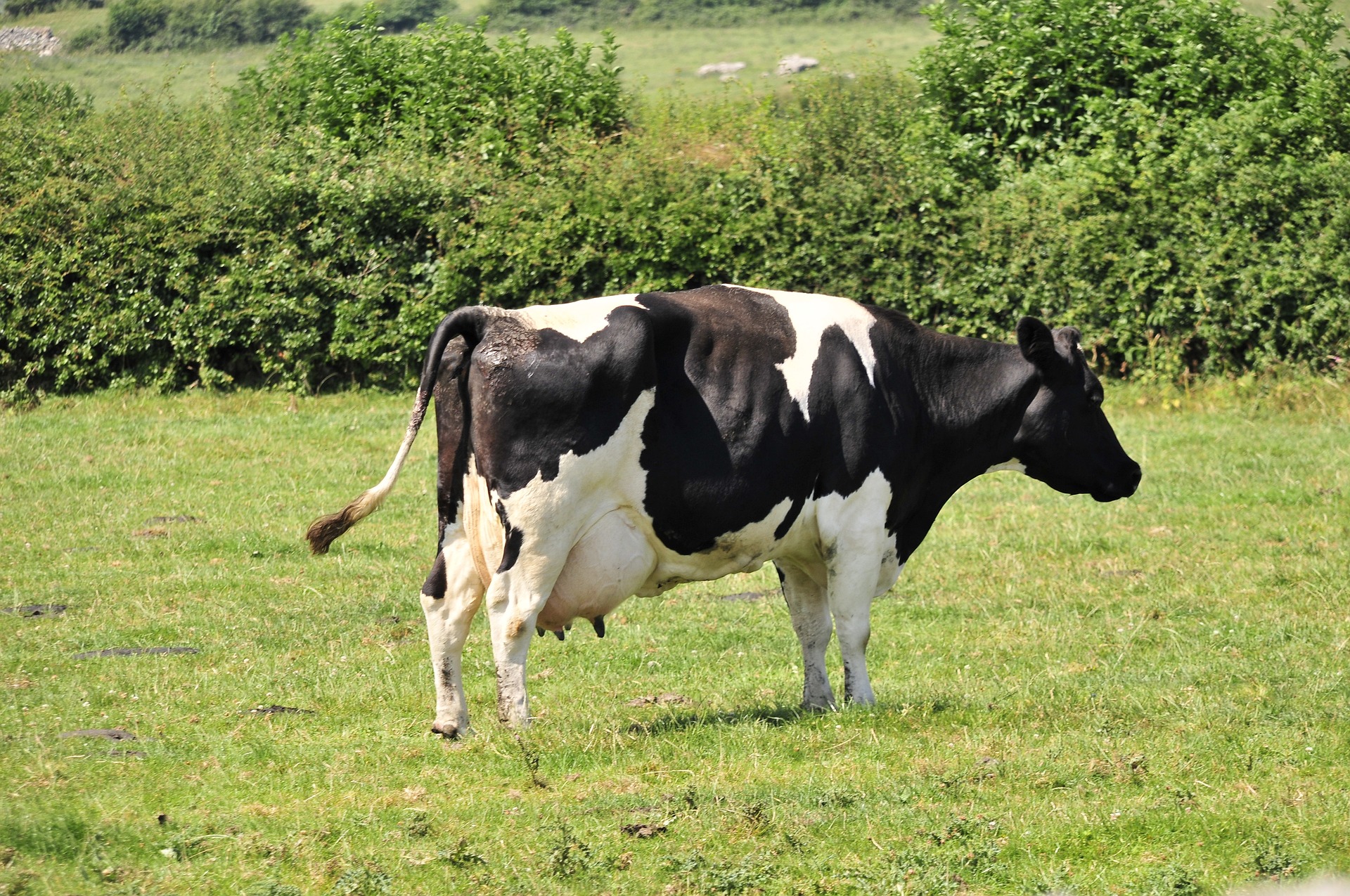
People have been very misguided about what a “healthy” dairy cow should look like. Most have been erroneously convinced that healthy dairy cows must look as big and beefy (and fat) as a beef cow.
Why is that? Why have people been so misled about this?
My assumption is that the media is to blame. People are exposed to movies or TV shows in which “healthy” dairy cows are grossly over-conditioned.
The people who put those cows on TV probably over-feed those cows so that they don’t have viewers screaming, “Animal abuse!” and then file complaints to the SPCA (Society for the Prevention of Cruelty to Animals) just because they can see ribs showing.
And, it probably happened because some “city slicker” (sorry, my city-borne readers, please don’t take offence) saw a “thin” cow on some show and felt the need to raise hell to the production company and actors about said cow “looking terribly malnourished.”
Even though that cow was probably in perfect body condition. How ironic.
Or, it may not even have been in a movie or TV show. Maybe it happened at a farm fair or somewhere where [dairy] cattle were displayed for the general public.
I don’t know; don’t take my word for it. I’m just assuming that’s what happened.
What the ideal dairy cow should look like
This is what an ideal dairy cow should NOT look like.
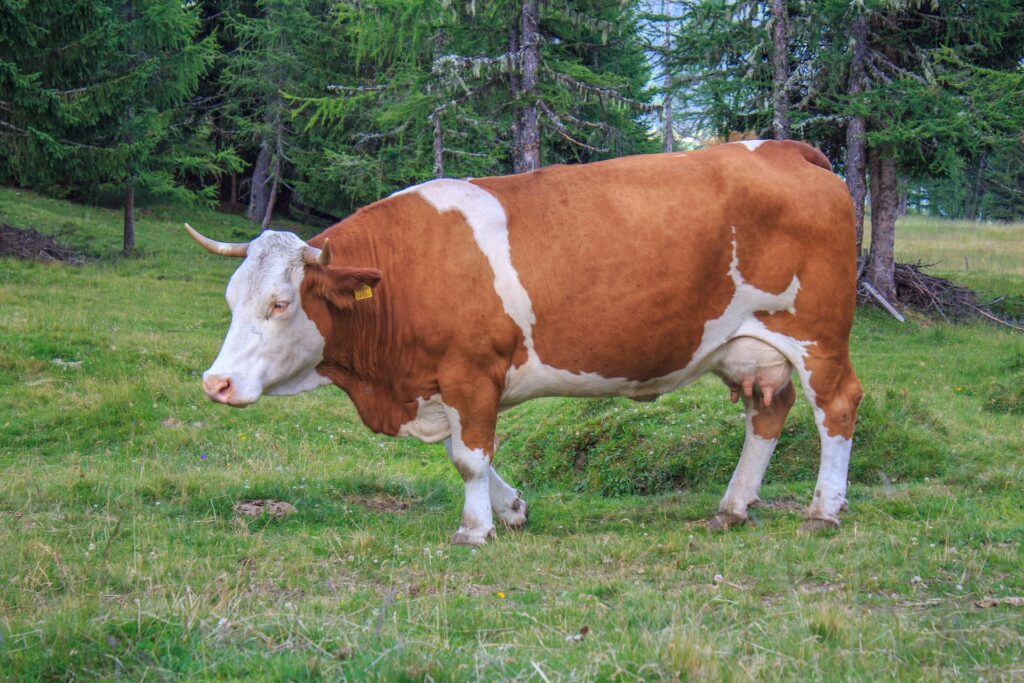
Dairy cows should look bony and thin. They shouldn’t look fat. They shouldn’t have so much fat that you cannot see the ribs or parts of the hips.
You should be able to see some ribs, spine, and a bit of (but not too sharp) hip structure.
(Aside: I know people with dairy cattle with more of the “older” genes, where cows aren’t as thin-looking as the modern dairy cow. However, they still have the typical “dairy” look despite looking like what most commercial dairy farmers would call “too fat.” These cows are family milk cows, not commercial heavy producers, so there’s significant lee-way in how they can look versus what heavy-producing cows would look when regularly contributing to the bulk tank milk supply.)
In a bit, I’ll explain why it’s harmful for dairy cows to be over-conditioned.
Seeing a dairy cow with a big udder that looks bony and thin is a normal look. Later, I explain that there are downsides to thin cows, and why farmers also need to be careful about not letting their animals get too thin.
Thus, it doesn’t indicate that she’s not being fed. It indicates that she’s a healthy, productive milking cow.
The bottom line is that thin, unhealthy cows will not produce nearly as much milk as healthy cows that look deceptively “too thin” yet are the farm’s top producers. At what point they’re in their lactation phase also plays a big role in how they look, something else I explain more below!
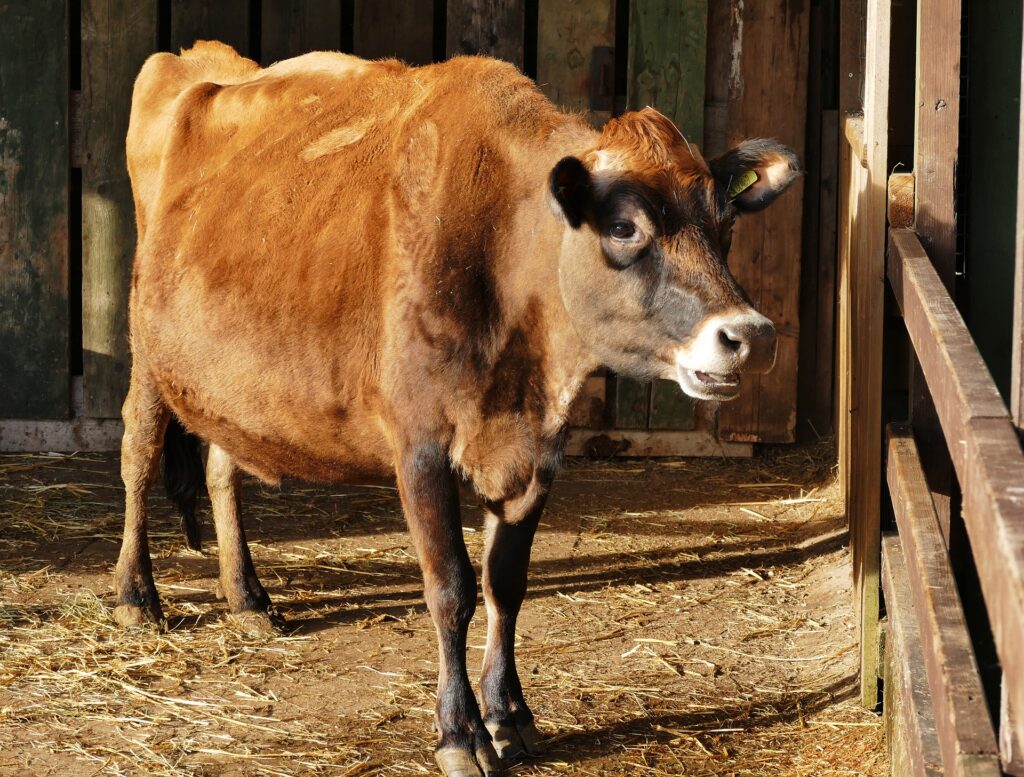
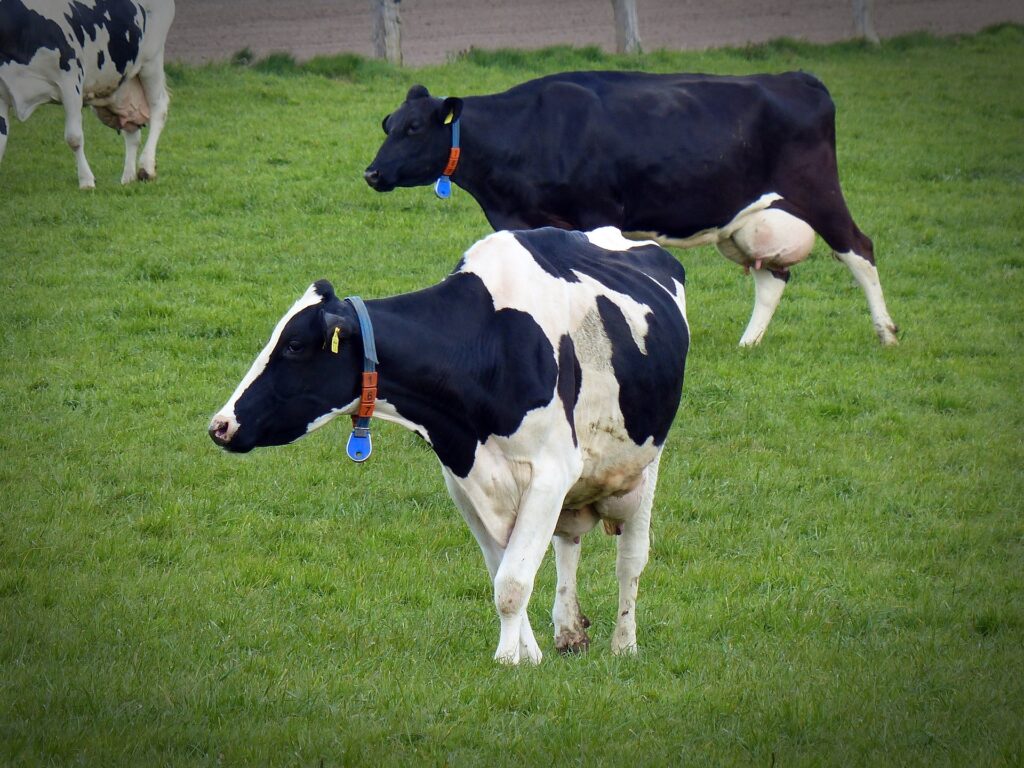
What are dairy cows fed, how much and when?
Dairy farmers like TDF Honest Farming, MeganDairyGirl and IowaDairyFarmer usually feed their cows once per day (other farmers may feed twice a day).
They work with qualified nutritionists who give them a set feed ration designed for their lactating dairy herd. This includes cracked corn, high-quality hay (usually alfalfa hay, etc.), corn silage, grass silage, and byproducts like mill run, dried distillers’ grains, brewer’s yeast, canola meal, soybean meal, and more. All this is mixed in a TMR (total mixed ration) designed to meet each cow’s nutritional needs.
Each dairy farm uses a variety of feeds, depending on what it can grow and access locally. Trucking feed from far away is usually far more costly than growing it at home. Grain and byproducts are exceptions, as they are easy to store and ship.
I’ve read that some people, when they see the word “ration,” interpret it as those cows are only given enough to eat in one sitting, and that’s it for the rest of the day. Those people probably imagine those cows are just like kids sitting at the dinner table waiting for their once-a-day meal: They’re given only a certain amount of food they can eat at that table at that one point in time per day (or over 24 hours), and if everybody cleans everything up, that’s too bad; gotta wait until the next meal shows up 24 hours later!
Nope, that’s completely incorrect. That’s not how it works.
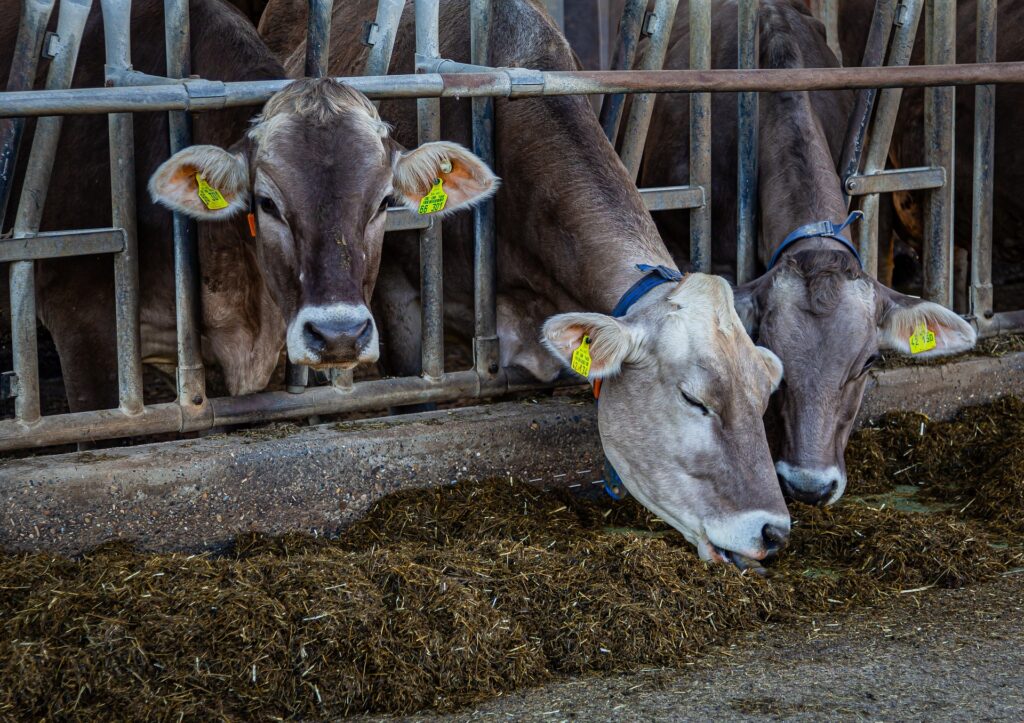
See, feed rations are designed so that not only all nutritional requirements are met (like calorie intake [energy], protein, salt, minerals, vitamins, and so on) but that each cow has the perfect amount of feed to last her for the entire 24 hours.
It’s like a buffet. They get served as much food as they want at the buffet line (being the feed bunk), and that amount is calculated based on their weight, the surrounding environment, their reproductive status, and how much milk they should be producing.
Holsteins get more feed than Jerseys because Holsteins are larger cows. The average weight of a Holstein is over 1600 pounds. The average weight of a Jersey is 1000 pounds.
Cold environments mean cows need to eat more to stay warm, while they eat less if it’s hot.
Cows that are lactating or in milk will eat more and have a higher plane of nutrition (they need more calories and protein-rich feeds) than when they’re dry (not in milk). Pregnant cows eat more than non-pregnant cows.
A 1000-lb Jersey will consume between 40 and 120 pounds of feed per day (25 pounds if all water is removed). The amount varies by water content. The lower the water content of the feed, the less she’ll eat. A cow will eat more fresh pasture forage than dry hay.
A 1600-lb Holstein cow will consume 60 to 200 pounds of feed daily (40 pounds if all water is removed).
When developing these diets, farmers and nutritionists don’t typically do a single diet for each cow. If a farm has over 150 cows (some mega-dairies have thousands of cows), that’s too much of a hassle to make sure each individual cow gets her precise ration. Only university dairies that are running research programs will do this. Not productive dairy farms.
Instead, the average weight of the entire herd is accounted for. Diets are not created for the smallest cows of the herd only, and the same is said for the largest cows. An average is used so that ALL cows get their fair share.
Thus, when that average is calculated, knowing how much each cow needs to eat, it is multiplied by the number of cows in the herd to determine how much feed that herd needs daily.
Does that mean some feed will be left behind? Yes, it will. And that’s perfectly fine. It’s more worrying if there’s no feed left behind halfway through the day, and the cows are forced to wait another 12 hours before they get their next meal. Cows need to eat constantly throughout the day. They’re unlike us, where we can go without eating for four, ten or even 16 hours.
Thus, dairy farmers ensure that those cows have plenty to eat from one feeding right up to the next. They are not being starved, neglected, or malnourished.
Anyone who tells you differently is a liar and has never visited a dairy farm in their life.
What makes dairy cows seem so thin, then?
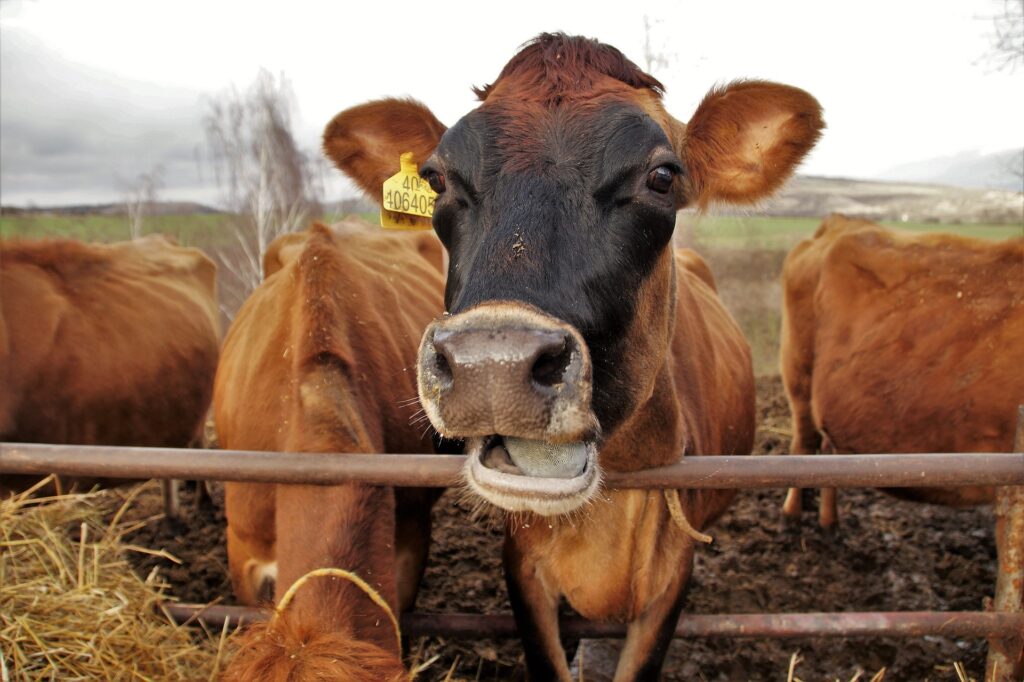
The “it’s just the way they are” doesn’t warrant enough reason to explain how dairy cows are naturally thin.
The reason dairy cows seem so thin has to do with their genetics and metabolism.
Artificial selection for dairy characteristics compared with beef
Humans have selected dairy cows purely through breeding (not genetic engineering, genetic manipulation, or any of that scientifically advanced laboratory-petri-dish stuff) to produce large quantities of milk. They make eight to ten times the milk their single yearly calf needs.
Selection for dairy production has been happening for hundreds of years, long before we ever knew that GMOs (genetically modified organisms) could exist. All it took was for farmers to keep records of certain cows and bulls that produced offspring with certain desirable characteristics that other farmers wanted to continue and improve on. Lots of breeding, watching baby calves grow up to be sires and dams, and on it continued.
That’s how they did it in the Good Ol’ Days!
Genetic or breeding selection for high-producing milk cows means that the genetics for producing lots of muscle and fat are largely suppressed. Dairy cows still have plenty of muscle and can lay down fat (they’re still much stronger than either you or I), but not to the extent that beef (“meat”) cows do.
It’s easy to see that in poor-milking beef breeds like Charolais, Belgian Blues, and Herefords. These famous beef cattle often struggle with decent milk production. Farmers who strike a happy medium between sufficient muscling and decent milking ability won’t get cattle built to look like bovine bodybuilders. (Herefords aren’t nearly as “built” as the latter two breeds, but years and years of selection for beef still took a toll on the breed’s milking ability.)
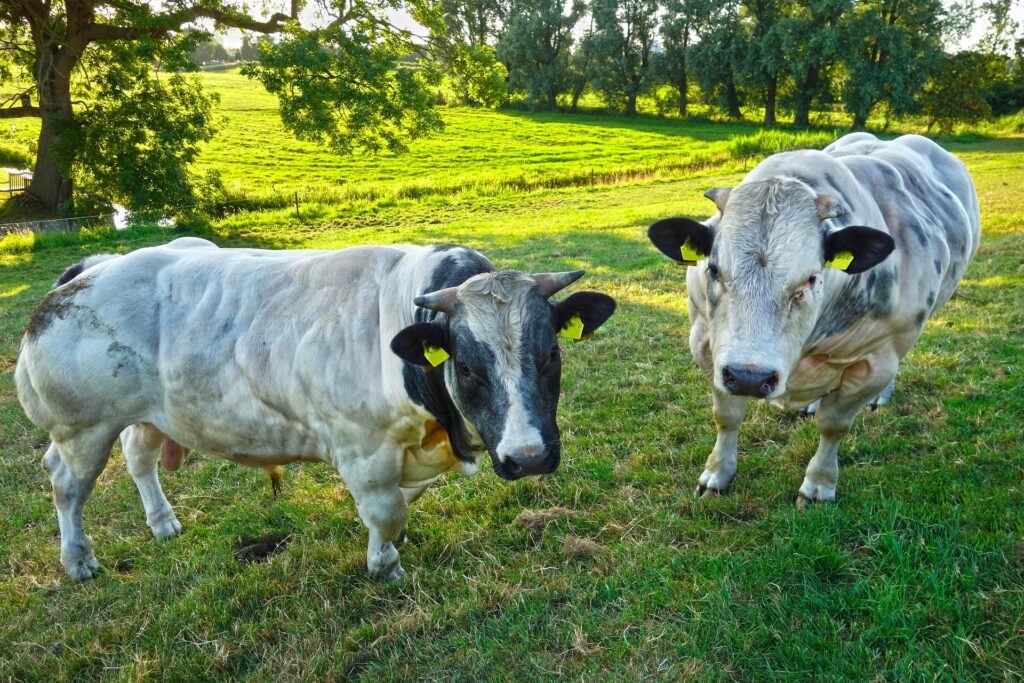
This is the case with other beef cattle like Simmentals and Angus. While they can have that beefy, thick look and have decent milk production, they’re not exactly the highest milk producers, nor are they all that thick and muscly (except the bulls, naturally).
Metabolic toll on the body for making milk
Producing milk takes a great toll on a mammalian female’s body. Lactation begins shortly before (or soon after) giving birth. The amount a cow produces gradually increases (or “peaks”) up to three to four months (90 to 120 days) after calving. Afterwards, milk production gradually declines until it’s time for her to “dry up” or stop lactating.
The lactation period is ten months long. The first three to four months are a gradual increase that peaks at the 90 to 120-day mark (depending on the cow). The next six to seven months are a gradual decline in production until the cow produces enough milk to be considered ready to be dried off (stopped milking entirely). Then, she is not milked for two months (“dry period”). At the end of the two months, she calves and returns to the main milking herd again.
Between post-partum (after birthing) and peak lactation, the female’s body tells her that she needs to make the best quality sustenance liquid for her offspring. A lot can be taken from her body if she doesn’t get the right nutrition during this phase. And whatever she eats goes straight to milk production. Some are left behind to ensure her body’s maintenance requirements are met.
(“Maintenance” means the bare minimum nutrition required to keep the body functioning normally.)
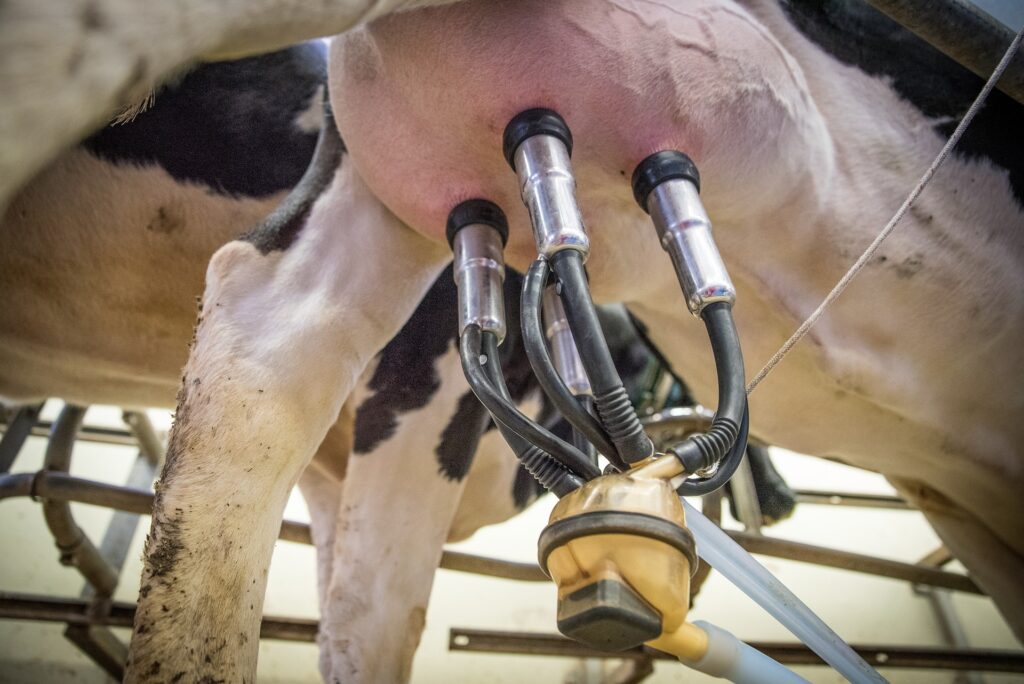
Dairy cows are particularly good at all of this. It’s in their genes. Their metabolisms ramp up during their greatest-demanding lactation phase so that, no matter what or how much they eat, they’re expected to lose some weight.
Of course, animal activists will tell you otherwise. Please don’t listen to them, because they don’t know what they’re talking about. #AskAFarmerNotAnActivist
Let’s be honest. All females “look like hell” after giving birth because so much energy goes into birthing and then switching over to making milk. Cows start gaining some weight back after their peak lactation period. They continue gaining a little more when they begin to dry off and during their two-month holiday in the dry pen.
But there’s a caveat. They can’t gain too much weight because it could spell bad news.
Why is it bad for dairy cows to be fat?
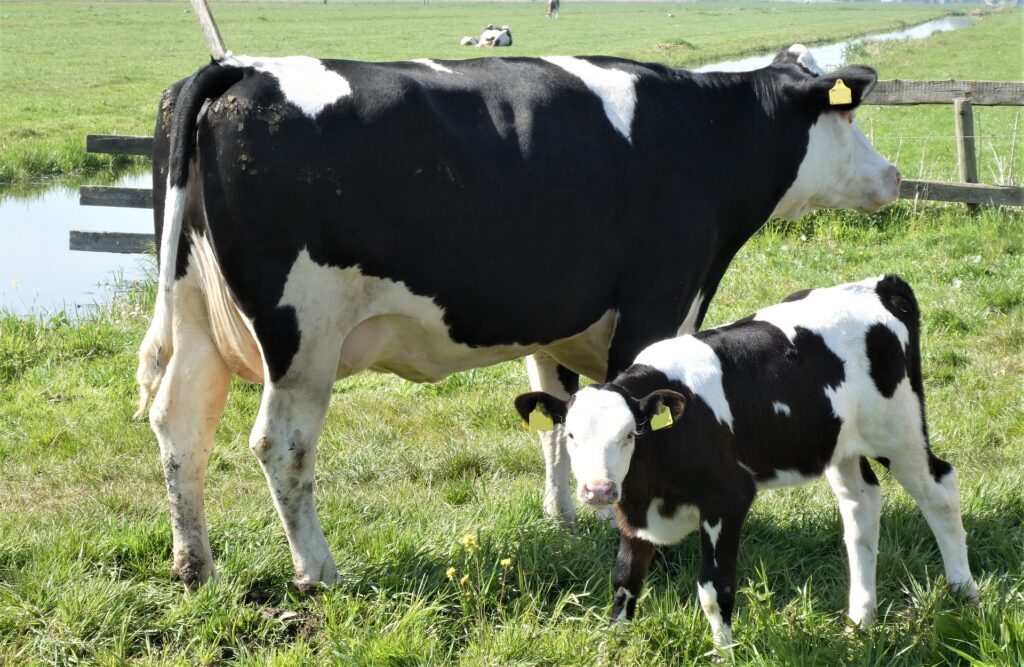
Dairy cows that are over-conditioned, overweight, or just plain fat, face all sorts of health issues.
To the untrained eye, they “look great,” or “look to be in perfect health,” when that couldn’t be further from the truth.
Dystocia is the first one that comes to mind. Calving problems in fat cows can be problematic with too much adipose (fat) tissue surrounding the birth canal. This can reduce the space available for the calf to pass through.
Fat tissue surrounding the reproductive tract negatively impacts breeding-back ability. Fat cows are likely to get cystic ovaries, for example.
Excess adipose tissue can also be deposited in mammary tissues. This adversely affects milk production to the point where she will be considered one of the poorest producers in the herd. This isn’t good since the dairy farmer’s income and operation hinges on what his cows can make. (Because, well, that’s their job.)
While dairy cows already produce eight to ten times their calf’s needs, by comparison, this is more concerning in beef cows. If beef cows are too fat, they can’t produce enough milk to feed their calf. Calves need milk to grow, and if momma can’t give enough, the little one won’t grow as much and get as big as [s]he should.
After calving, over-conditioned cows are more prone to ketosis and milk fever. Milk fever hits immediately after calving, and blood calcium levels suddenly dip because the body is going into making milk. This can be deadly if not caught and treated right away. Scientists believe over-conditioned cows are more prone to milk fever because they experience reduced appetite around calving time.
Ketosis is expected to hit 4 to 6 weeks after calving. It happens when milk production is beginning to increase. Cows experience a massive draw on energy reserves, which create toxic ketones. Fatter cows have a lot more energy reserves to draw on; therefore, there’s the potential for more toxic ketones to be produced. While not as deadly a disease as milk fever, it will make a cow very sick, and veterinary treatment will be needed as soon as possible.
Displaced abomasum (DA, where the cow’s “fourth stomach,” if empty enough, will flip over and create a nasty twist at both ends) is prone to happen around the same time the risk of ketosis raises its ugly head. DA is often associated with ketosis. If a DA is not fixed soon (if not right away), the cow will die.
Other health concerns that aren’t as visible associated with over-conditioning include fatty liver disease, cardiovascular disease, arthritis, and other chronic diseases. Most of these diseases show up the older a cow gets.
How do farmers tell if a cow is too fat?
Farmers often judge by visual judgment. Cows in their “summer coats,” with hairs short and close to the skin, are the easiest to score on visual body condition alone.
Body condition scoring is the term used to determine the amount of fat a cow carries. Dairies use the one-through-five scale, where one is the most emaciated, and five is the most over-conditioned.
(By comparison, most beef operations use the one to nine scale. Here in Canada, we tend to consider the one-to-five scale, the Canadian BCS scale and the one-to-nine, the American BCS scale. What a way to confuse our southerly neighbours, lol.)
What about cows that have their thick winter coats? Canadian (and many American) dairies have cold winter weather to contend with. Dairy cows will grow and maintain their thick, luscious winter coats throughout this period. Thus, the best way to do body condition scoring is to put them in a head gate (or squeeze) so that the farmer (or someone nutty like me) can put their hands on them and feel for the amount of fat cover on their bodies.
Why? Because winter coats can make a thin cow look like she’s in the best condition ever. Winter coats can hide a lot of flaws. So, the best thing is the hands-on approach. The hands can “see” what the eyes cannot.
I never look at the belly to determine fat level. EVER. The abdomen is where the rumen sits, and the rumen (and its neighbouring stomach chambers) takes up a lot of room in that anatomical area of the cow. Just because a cow has a big gut doesn’t mean she’s fat. She could be great at converting roughage into milk, or she could be very pregnant.
Instead, we look at (feel for) the whole pelvic region, the spine, the ribs, and the base of the tail. When I feel for fat cover, I feel how sharp (or not) the bones are protruding through the skin. If the area feels rather smooth and not sharp, that tells me there’s enough fat covering those anatomical regions.
Dairy cows shouldn’t have so much fat that you can’t grab onto the hooks or pins of the pelvic region (“hooks” are the front pelvic area, “pins” are at the back next to the tail). But they shouldn’t be so thin either that it feels like there’s next to no extra tissue–other than skin–covering them. While visible, the ribs should feel like there’s a bit of “stuff” covering them. Same with the spine and the “tail head” (base of the tail).
Nothing should feel overly and uncomfortably sharp. If it does, that’s cause for concern. It tells me those cows do, indeed, need a better feed ration with more caloric content.
Can dairy cows be too thin?
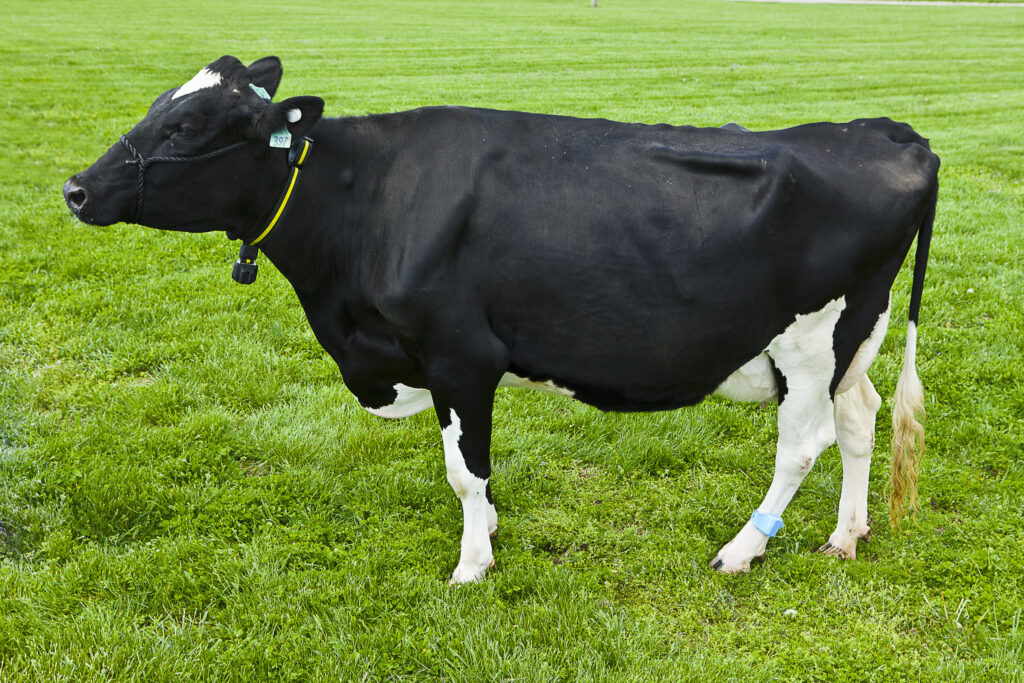
Source: Flickr, UK College of Agriculture.
Absolutely, they can. It’s a fine balancing act between too-fat and too-thin cows, which is why farmers have to work with experienced and qualified nutritionists to ensure their cows aren’t so thin that the SPCA needs to be called and the farm shut down, nor so fat that they are always having to deal with calving, milk fever, and ketosis issues.
However, it also depends on the breed. Holsteins and Brown Swiss tend to hold their condition (be a little “fatter”) better than Jerseys or Guernseys. The latter two are notorious for looking too thin, and that’s just their breeding and genetics.
Jerseys are renowned for their rich, high-fat content milk. So, of course, more fat and energy will be pulled to meet milk demands purely because it’s in their genes.
Holsteins just produce huge quantities of milk. They’re big, they eat a lot, and they’re going to produce a lot.
Thin cows, despite all this, are not healthy cows. They are more prone to calving issues, milk fever, and ketosis and can more easily experience heat or cold stress. Malnourished cows don’t produce much milk either. Plus, they can become infertile or experience low fertility rates.
This is because every ounce of nutrition an emaciated cow gets goes right into her body to keep it functioning. The goal is life first; if living is in danger, the other stuff, like getting pregnant and raising a calf, isn’t important. However, once those basic needs are met and more nutrition is available, her body can get back into the rhythm of getting pregnant, growing the fetus, and then producing milk.
Cows can get quite thin for reasons beyond being improperly fed. They may have some disease, which causes them to get thinner and thinner despite the ample feed available. Internal parasites are common and serious, incurable diseases like Johne’s Disease are another. The latter can threaten an entire farm if even one cow is confirmed to have this nasty, debilitating illness.
Concluding Thoughts
The answer to this question is a resounding no: Dairy cows are not thin because they’re malnourished. They appear thin because the public media has convinced people that it’s better to have fat, over-conditioned animals than those that show even a slight amount of rib or pelvis.
The vast majority of dairy cows are well taken care of and well-fed. Their bony appearance is purely due to their genetics and breeding.
While I didn’t dive into the annual reproductive cycle of the dairy cow, certain periods of her pregnancy and lactating cycle will cause her to lose weight and gain weight. Dairy farmers understand this and develop diets to meet these changes head-on.
A fat cow isn’t a healthy, good-looking cow, despite what you may think. She can get major, life-threatening issues that, if not treated right away, can kill her. Milk fever and displaced abomasum are just two examples.
Finally, indeed, cows can get too thin. Rarely is it because they’re underfed, though it does happen. They can get thin from other concerning issues like parasite load or a nasty disease called Johne’s.
If you doubt any of this, I highly recommend checking out dairy farmers like IowaDairyFarmer, TDF Honest Farming, MeganDairyGirl, and others. Time and again, they show what they do and how they do it and debunk many myths from people who have gotten some very wrong information about dairy farming from some very questionable sources. Please give them a follow; you’ll thank me later!
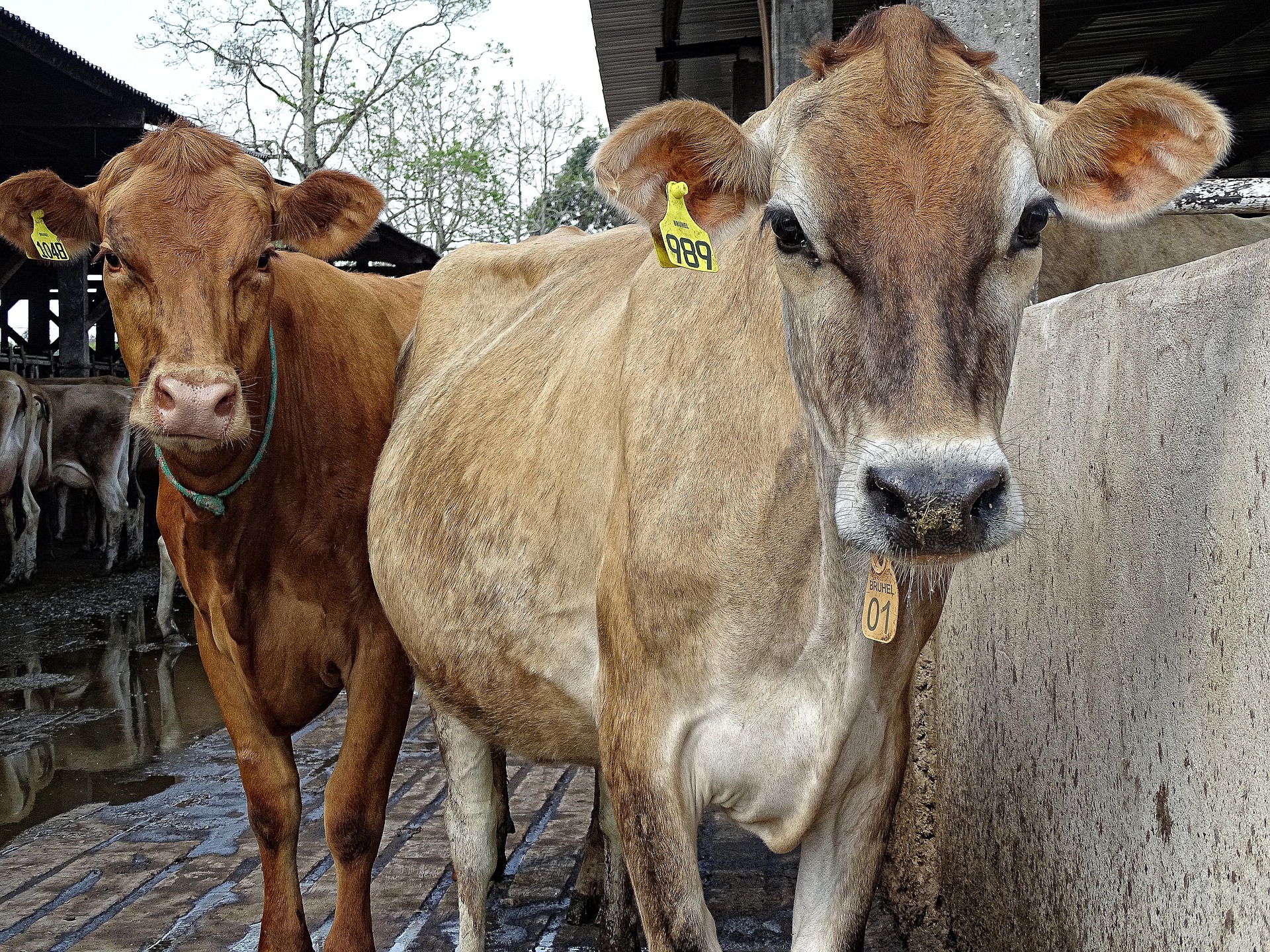
0 Comments